The institution of offering secured loans is almost as old as humankind itself. It was widespread in almost every state in antiquity and through the Middle Ages. Although the church tried to take action against usury in the past, due to the activity of the Franciscans, they only found an effective tool in the 15th century.
The first pawnbroker opened in Perusina, Italy, in 1462, and was followed by hundreds of similar institutions in western and northern Europe. The idea of creating a central state-owned pawnbroker office was first raised in the Habsburg Empire in 1701. The idea was acted on in 1707 and the Viennese pawnbroker, the famed Dorotheum opened.
Maria Theresa founded the first state-owned pawnbroker in Pozsony (present-day Bratislava, Slovakia), in 1773. The founding charter specified the types of objects that could be pledged, the interest to be charged, and the handling fees. Unredeemed items were to be auctioned after the pledge period ended. The Hungarian Royal Central Pawnbroker moved to Buda in 1787. Naturally, the Bratislava office was not closed; it became a branch. The office was moved to Pest in 1802, to a building on the corner of the present-day Királyi Pál Street and Szerb Street, which had previously functioned as a warehouse, monastery and hospital.
The state-run pawnbroker was able to keep up with competing private businesses. By the mid-1880s turnover was so high (thousands of items were pawned or sold daily) that the organisation need a new, modern building designed to its requirements.
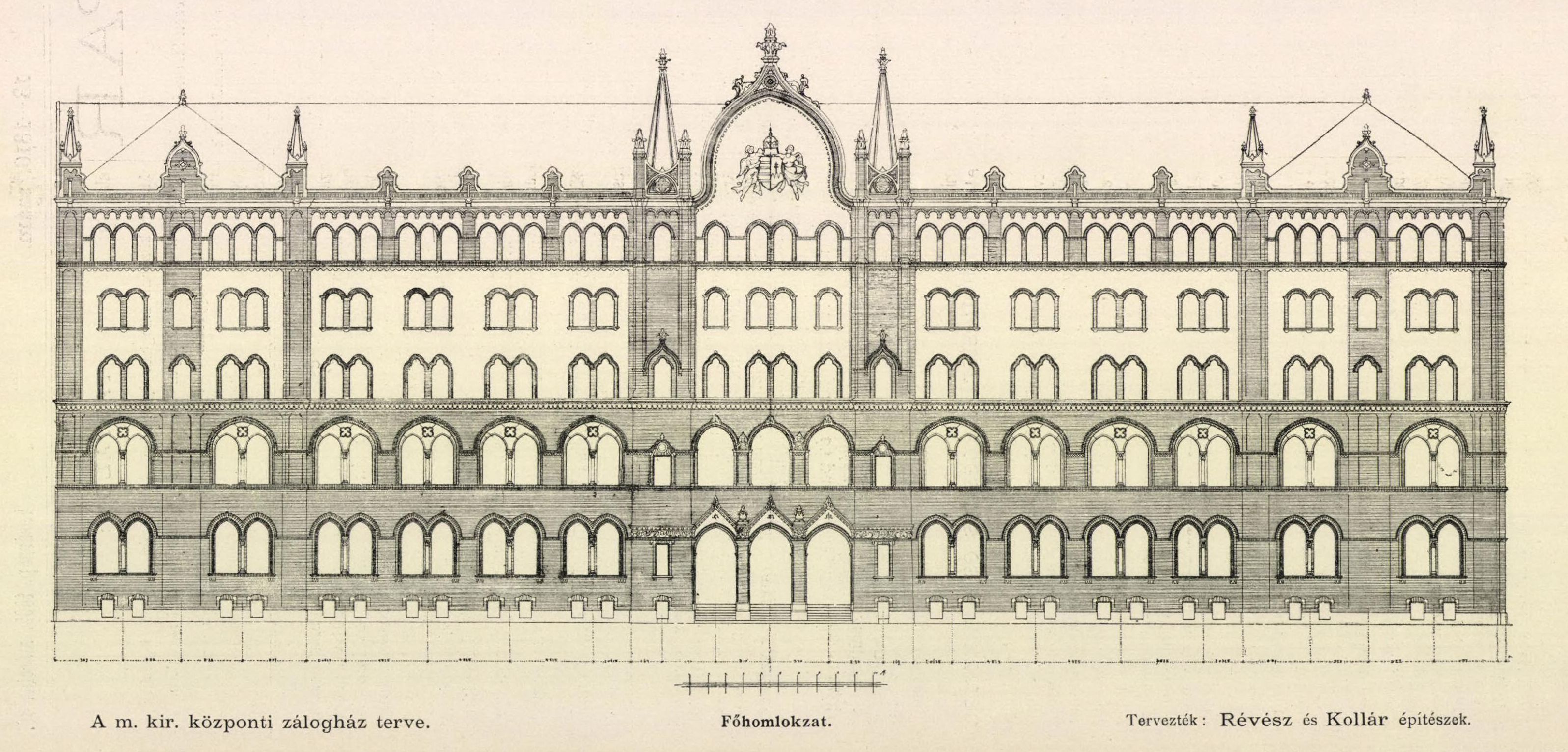
Drawing of the facade of the Central Pawnbroker from the 30 March 1902 issue of Építő Ipar
In July 1900, the Ministry of Commerce awarded first place to the joint design of Samu Révész and József Kollár, out of 24 entries to a tender. The two architects were mostly known for designing private homes, villas and bank buildings in Buda. Their plans uniquely combined various historicising – mostly Gothic revival – characteristics with Art Nouveau elements.
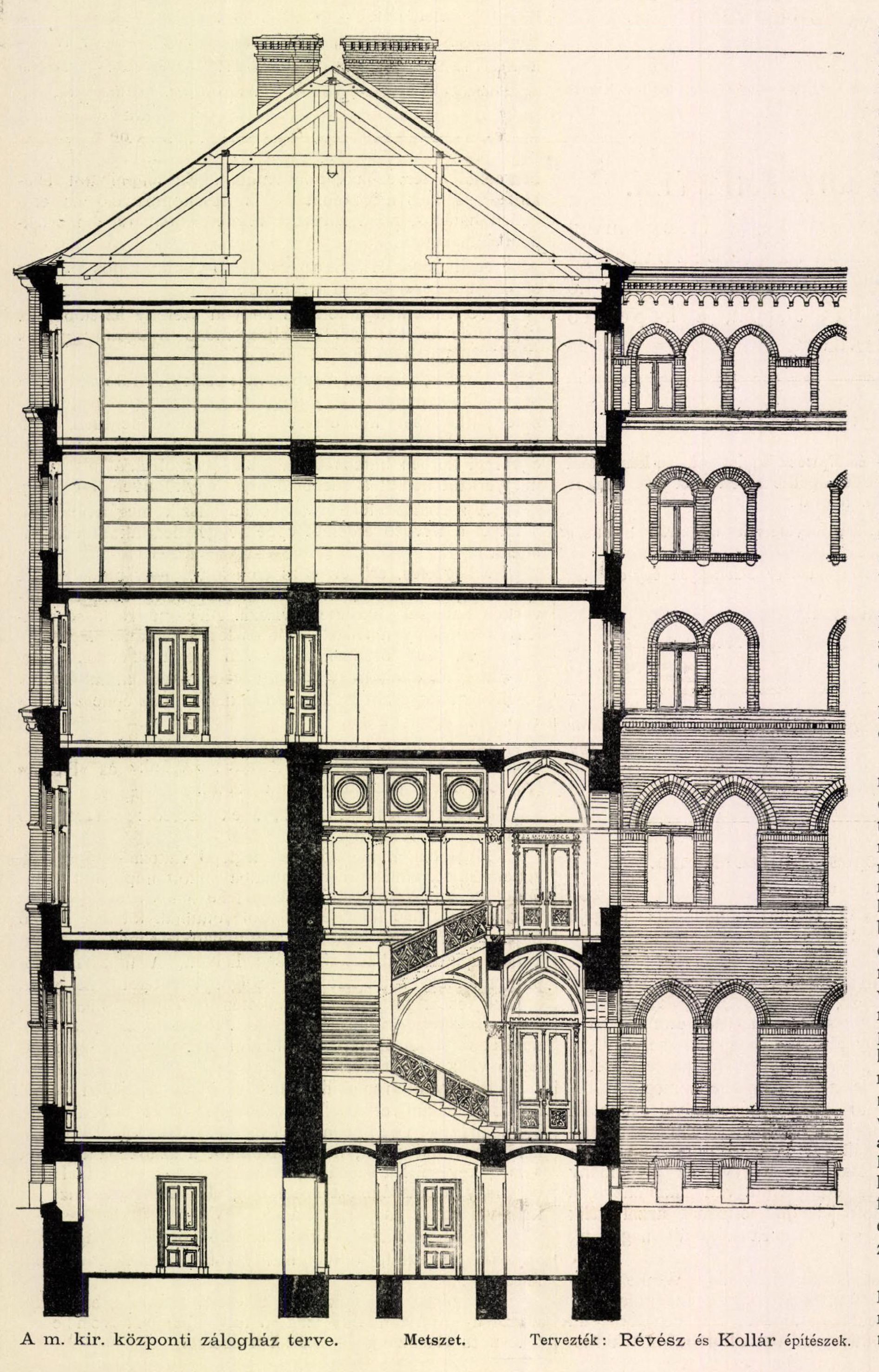
Cross-section of the Central Pawnbroker from the 13 April 1902 issue of Építő Ipar
The Central Pawnbroker was built on the corner of Lónyay and Kinizsi Streets on a 1,400-square-metre plot, at the cost of about 856,000 Crowns. Two basement levels were built under the six-storey building, and a significant part of the attic was also utilised, leaving almost no unused space in the building. Two large rooms for pawning jewellery and personal items were set up, opening to the left and right of a spacious foyer reachable from Lónyay Street. Two rooms dedicated to redeeming items were located on the first floor, above which the storerooms lined the upper storeys.
The large vault filled with safes was located on the ground floor. The offices could be accessed from Kinizsi Street: the director's offices, the main treasury, four official flats and the director's flat (these latter on the first and second floors), while additional storerooms filled the third and fourth floors. Goods were moved in pneumatic tubes. The original pipes were made of copper, and contemporary descriptions of the operating room paint an impressive picture.
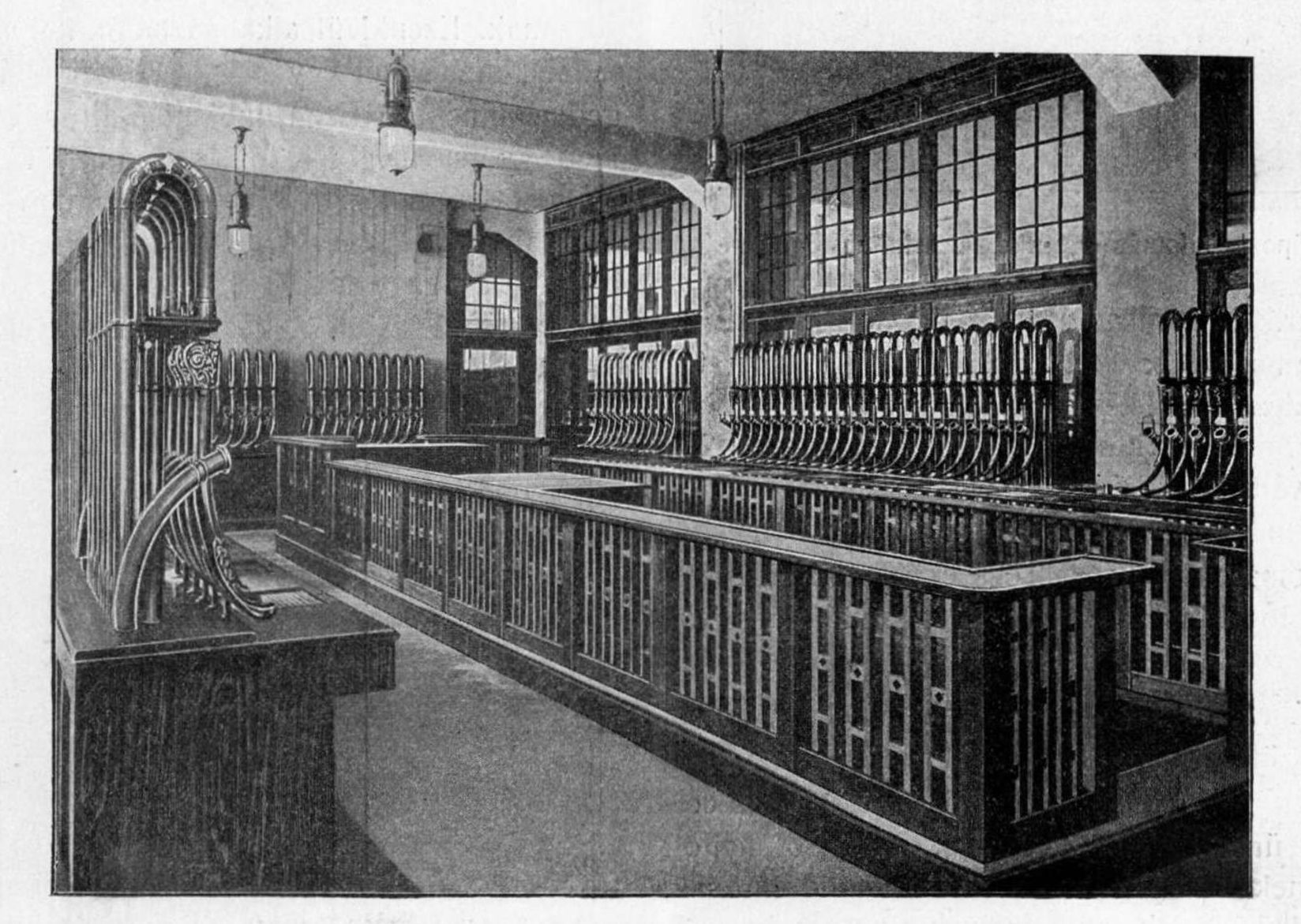
Picture of the pneumatic tube control room in the 20 August 1909 issue of Műszaki Lap
The vault was another interior feature, which at the time was a rarity in Hungary. The burglar-proof room was encased in 45-centimetre-thick concrete walls into which cross-shaped steel elements were embedded every 12 centimetres. The vault was also probably blast-proof, and no one even attempted to rob the vaults which housed the most valuable items over the years.
Pawnbroker staff began using the neo-Gothic style building in 1903. An auction hall was also opened in the building in 1920. Not only the valuables pawned by the public could be bid on within it, but the contemporary masters of the fine and applied arts could also exhibit their work.
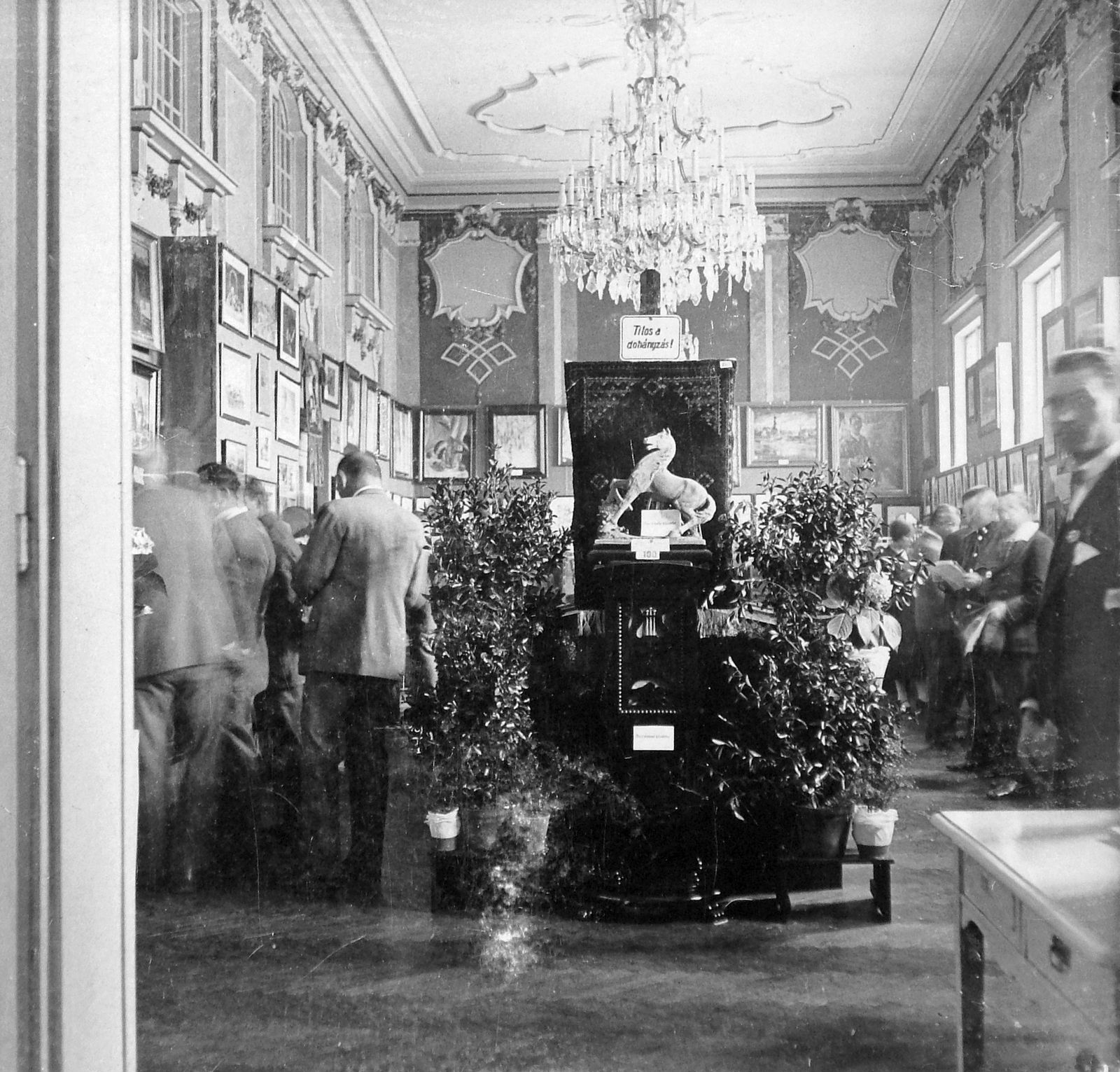
Pre-auction exhibition of art in the Central Pawnbroker in 1923 (Photo: Fortepan / Image ID: 9762)
The building was bustling, for a time art auctions were held daily. In 1924, the Central Pawnshop was integrated into the Magyar Postatakarékpénztár ('Hungarian postal savings bank'). The bank guaranteed most of the payments moving forward. More than 100 employees worked in the building at the time, from the director through inspectors and evaluators and the workers in the storerooms. The institutions remit also expanded, as the postal savings bank became the state authority in charge of supervising private stockbrokers.
The institution was renamed in 1948. First, it was known as the Állami Zálogház és Árverési Csarnok Nemzeti Vállalat ('state pawnbroker and auction hall national company'), but the name was changed again in 1951 to Bizományi Áruház Vállalat (BÁV, 'commission shop company'). These changes were also reflected in the building's appearance. The original national coat of arms on the top of the main façade was replaced with the Rákosi coat of arms. However, traffic in the building remained largely unchanged despite changes to the structure or owner of the organisation and historical tumult.
Trading remained constant. Private pawnshops were closed during socialism, but BÁV had offices and branches in almost every district. Those in the capital did not have to travel to the city centre if they wanted to exchange their valuables for money.
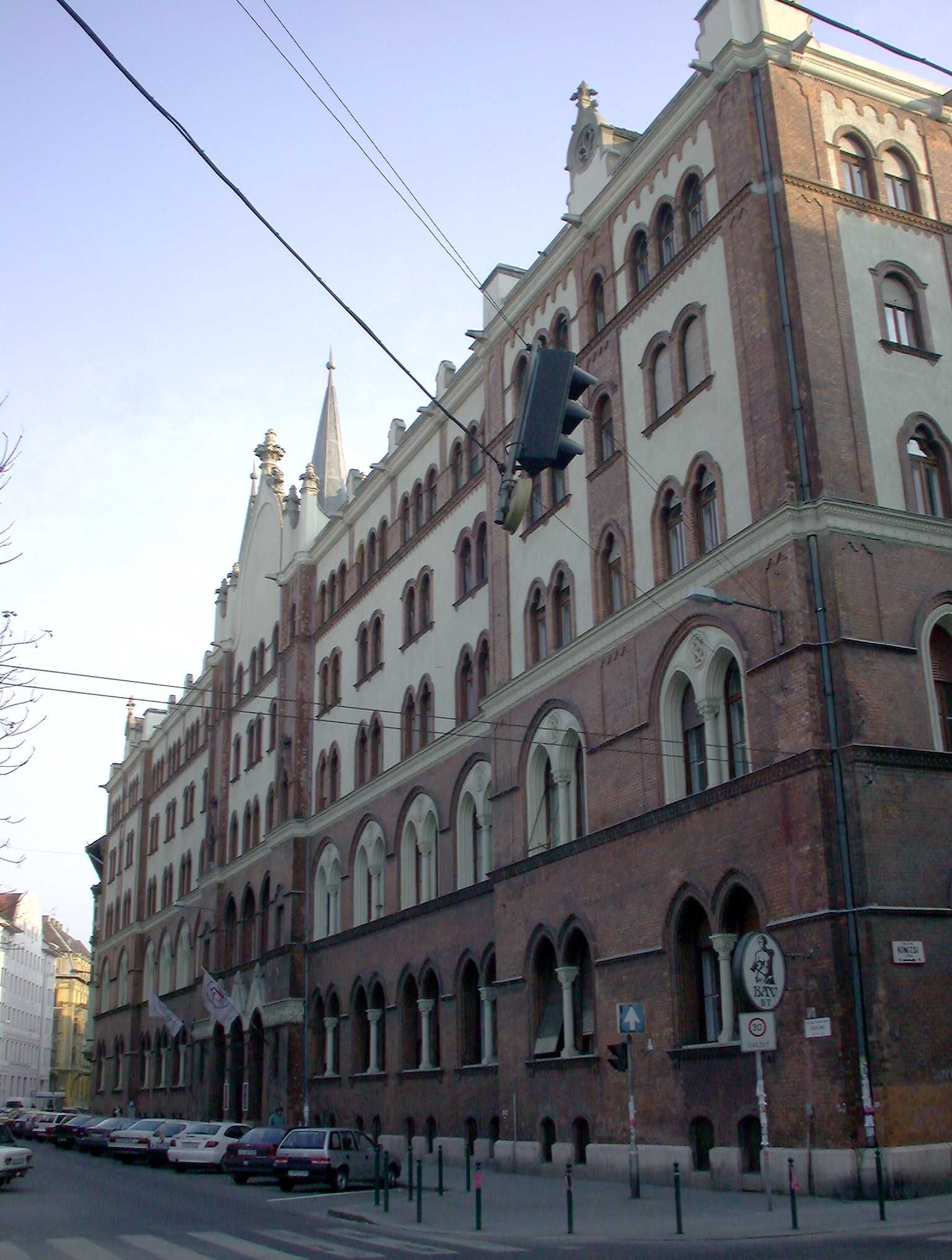 The building in 2004 (Photo: Ferencváros Local History Collection)
The building in 2004 (Photo: Ferencváros Local History Collection)
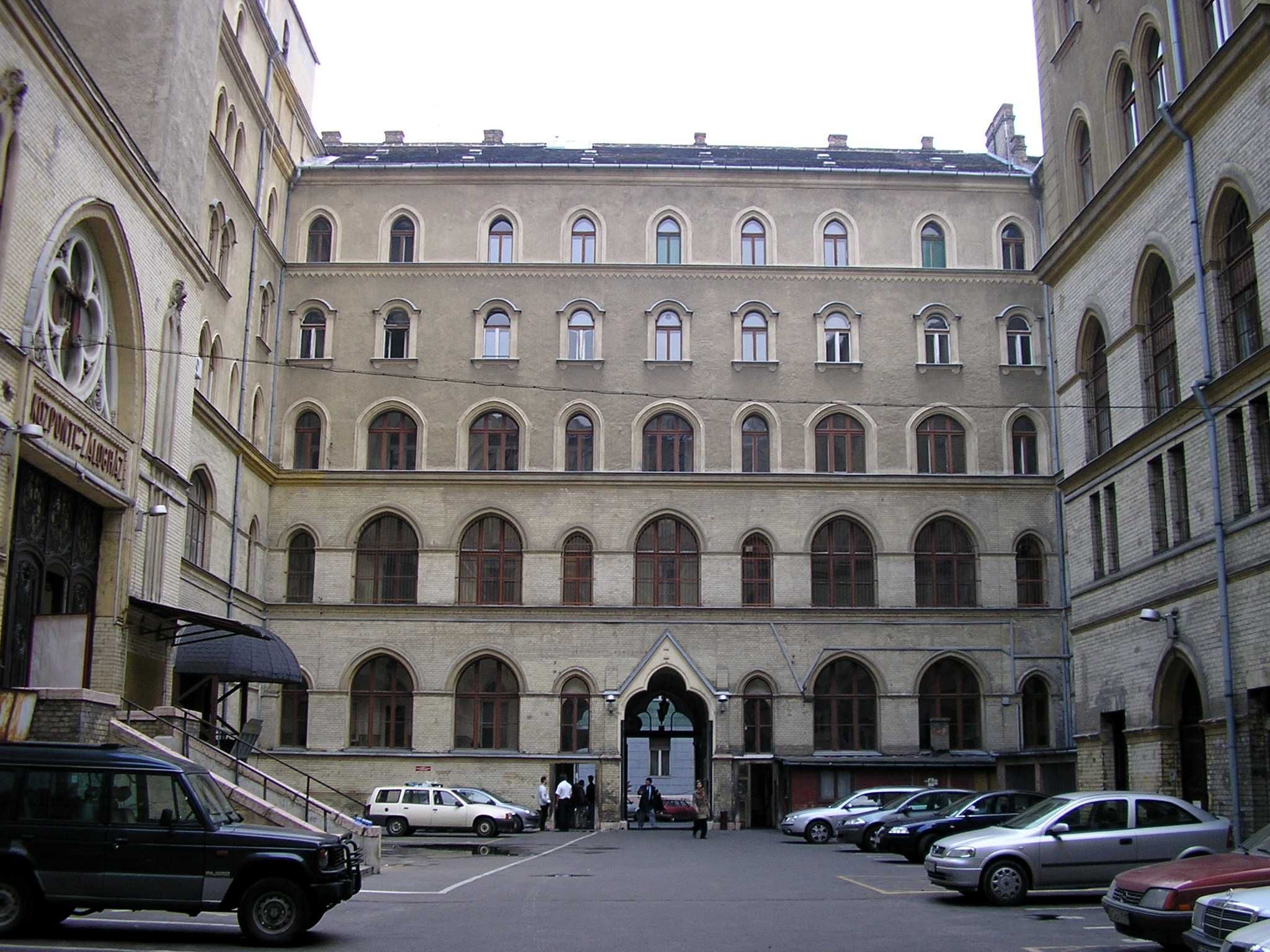 The courtyard of the building in 2004 (Photo: Ferencváros Local History Collection)
The courtyard of the building in 2004 (Photo: Ferencváros Local History Collection)
%4004%E2%80%945.jpg) Entrance to the building from the courtyard in 2004 (Photo: Ferencváros Local History Collection)
Entrance to the building from the courtyard in 2004 (Photo: Ferencváros Local History Collection)
In 2006, BÁV, which had been operating as a joint-stock company for years by then, sold the Lónyay Street headquarters to a Spanish real estate investment company, which planned to turn the building into a hotel. The wonderful pneumatic pipeline quickly disappeared, as did the furnishings. The rooms stood empty for years. In 2008, the plans for the hotel were scrapped, and no new ideas emerged. At times, film crews appeared, and the former pawnbroker again came to life, for a short time.
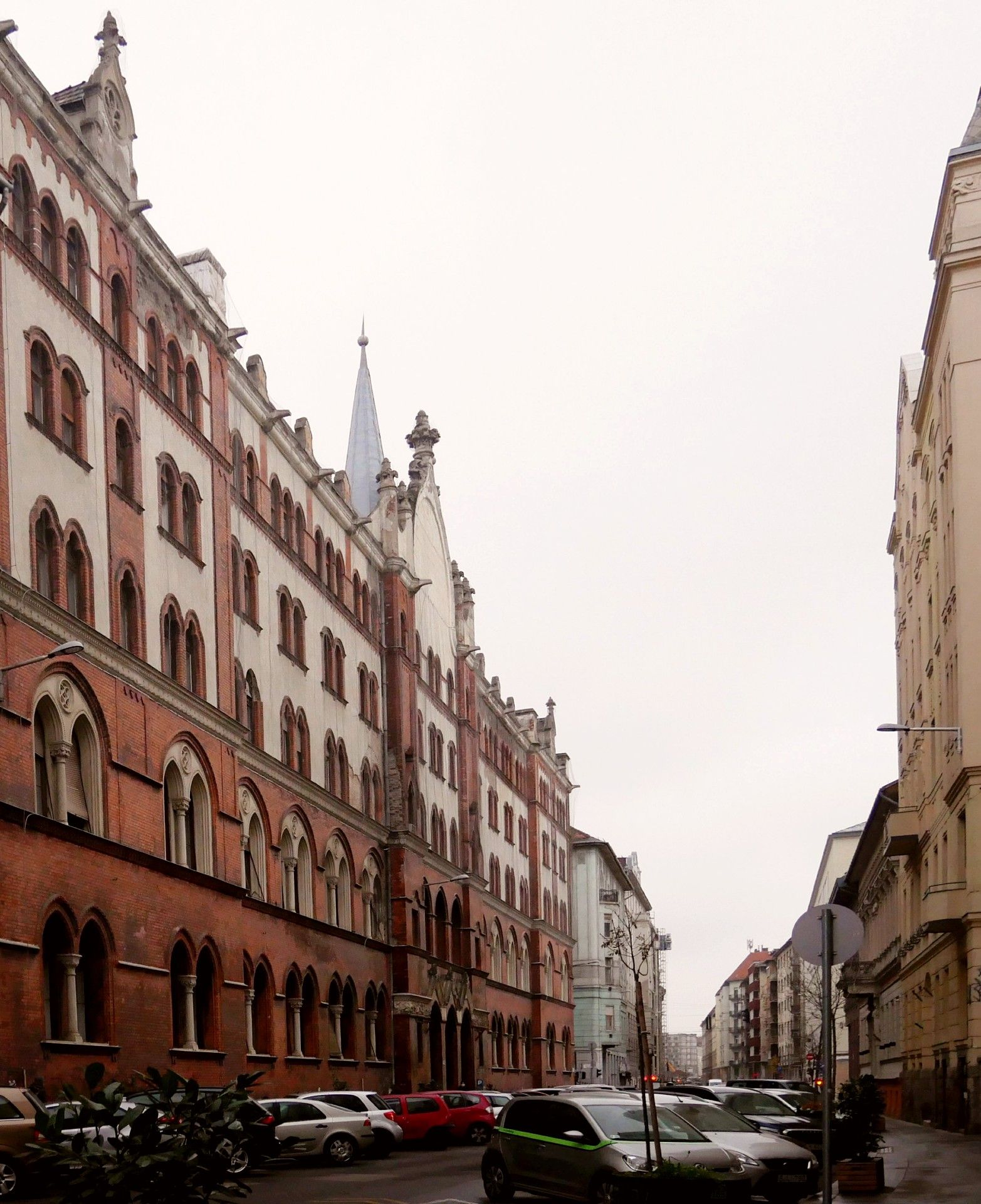
The former Central Pawnbroker in 2020 (Photo: Simon Tímea)
In recent years, viewers may have recognised the building as a police precinct in suburban New York in 1890, or the home of a comic book hero in a fictitious age. However, locals have only watched the building slowly fall into disrepair, and its ornaments and decorations weather.
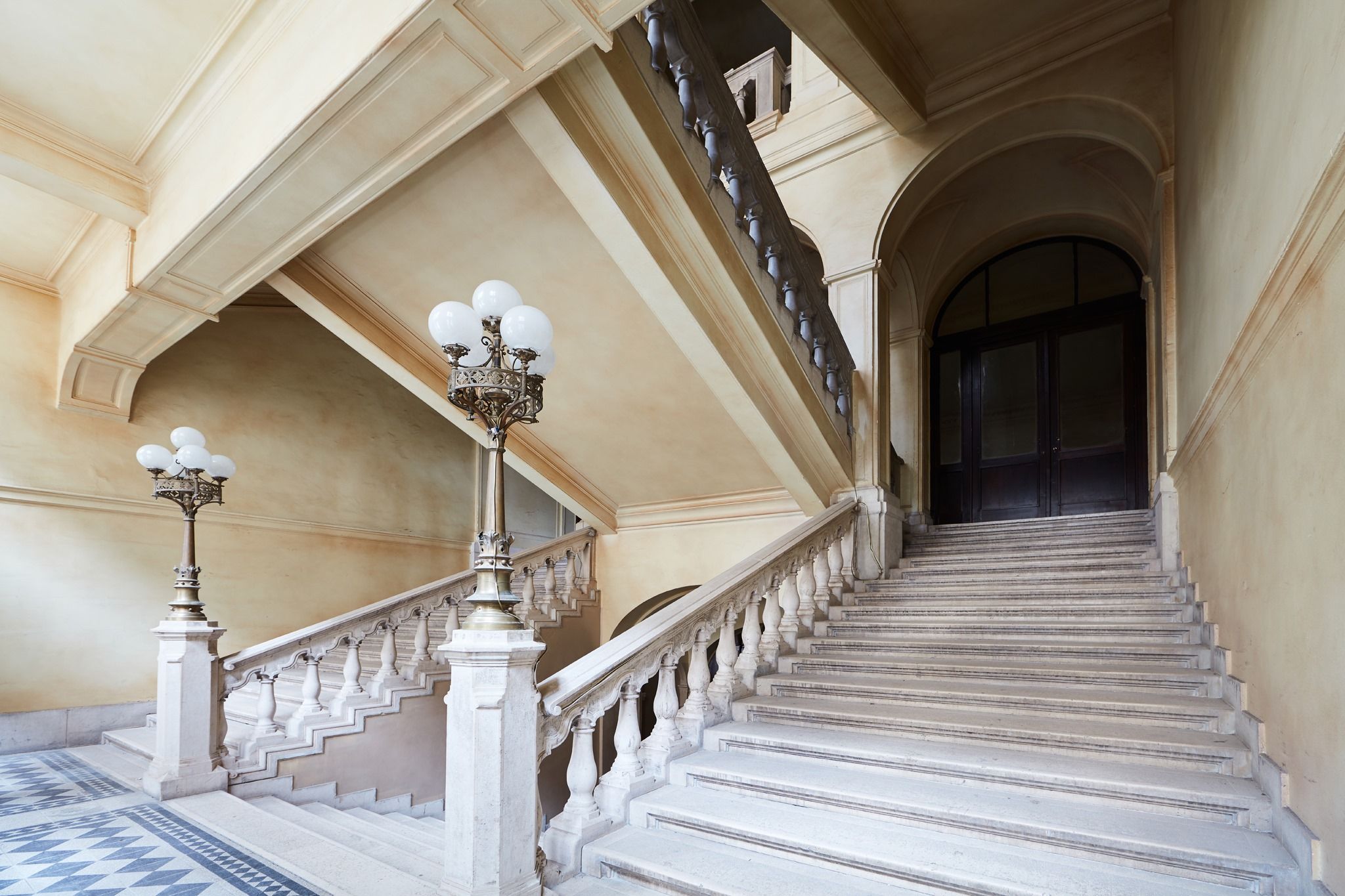
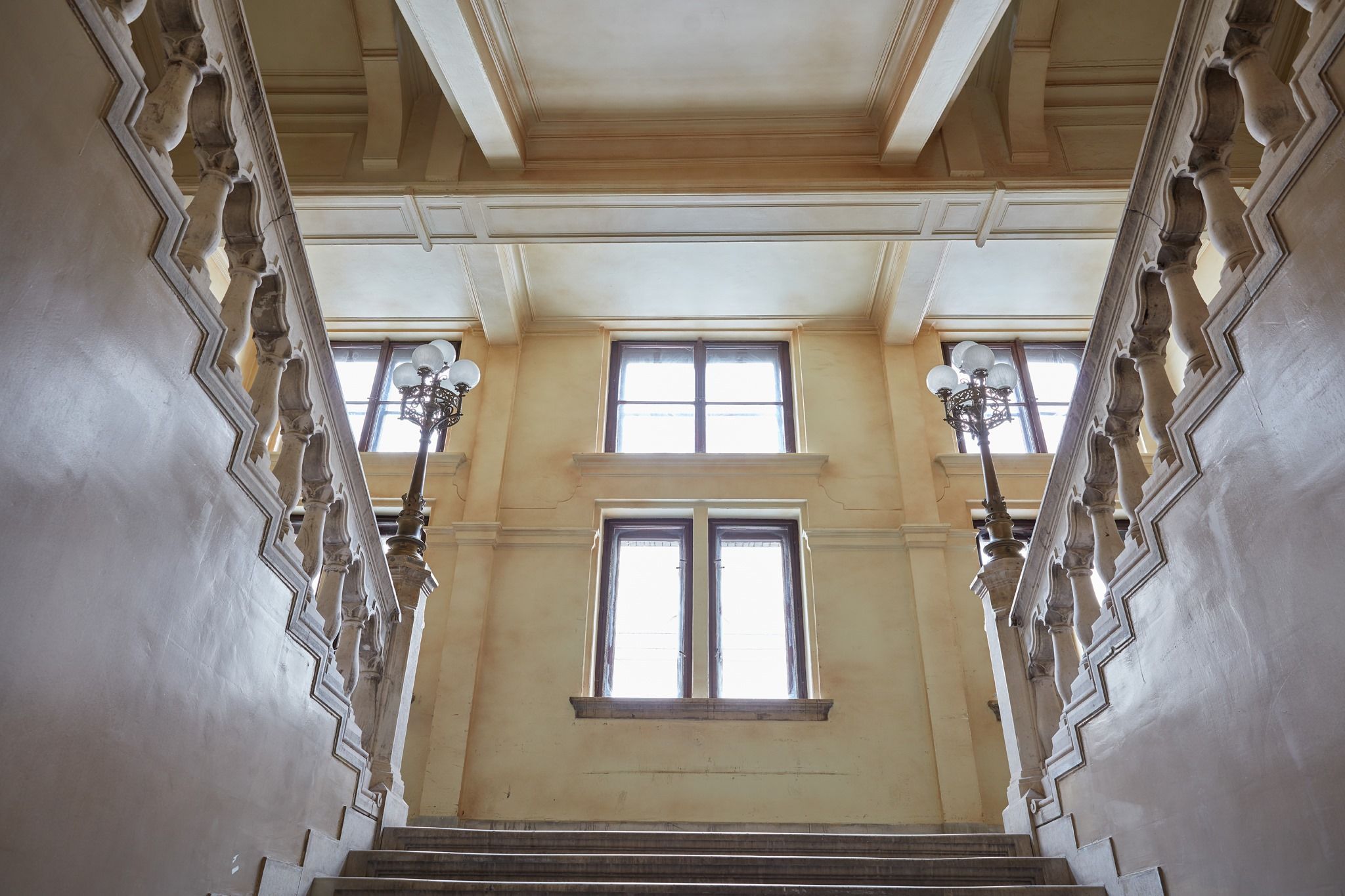
Detail of a staircase from 2020 (Photo: Gábor Mészáros)
As the years went by, the likelihood of the building being torn down increased. However, luckily, the age of uncertainty is over. The Hungarian state bought the building from its previous owner in 2017. A large-scale renovation began in 2019, and the building is to house the Faculty of Law of Károli Gáspár Reformed University. Trading will be replaced by education, and best of all, this immense turn-of-the-century public building will stay standing.
Cover photo: The former Central Pawnbroker in 2004 (Photo: Ferencváros Local History Collection)





































Hozzászólások
Log in or register to comment!
Login Registration